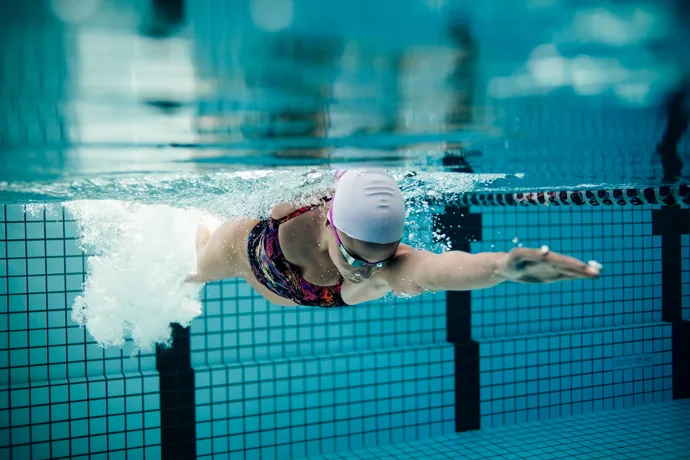Swimming needs strength and strength comes from working out. Having the strength to swim is the basic thing for swimming but when it comes to faster swimming in competitions or while working as a lifeguard, with the strength you also need some techniques.
In this article, we are going to specifically about some hand positions that make swimming faster and swift. So let’s dive into the subject with different hand techniques for swimming that are specifically taught by swimming instructors or in lifeguard training.
Table of Contents
The Different Phases Of The Front Crawl
It’s not just the time that your hand is in the water that’s important to be able to swim faster. Let’s look together at the different phases of the crawl and in particular at the hand. Lifeguard training courses describe these hand techniques in detail with practical applications.
Immersion Phase/Water Intake
Your hand is bent slightly downwards during the immersion phase and dips shoulder-width apart in the front. The fingertips hit the water first. You have to be careful not to smack your palm on the water, otherwise, you’ll be working against the water resistance again. Only in the water do you stretch your arm fully forward. Bend your hand and forearm down to catch water. The propulsion phase of freestyle swimming then begins.
1. Pull Phase
You extend your forearm down until your arm is pointing down at a 90-degree angle. So about shoulder height. Your elbow is close to the water surface, so it is above your forearm and must not drop down. Your hand should not fold backwards but should be considered an extension of the forearm. It is gently guided towards the body’s centre of gravity to support the next phase.
2. Pressure Phase
The pressure phase gives you the most propulsion. You push your arm back (with increasing speed) to full extension. Your hand must put all its strength into the push-off to bring the body forward.
3. Above Water Phase
Your elbow leaves the water first and is pointed up. The hand is relaxed and lies under the elbow close to the side of the body.
Technique Exercises To Improve Hand And Finger Position
Swimming With Paddles:
Different types of paddles give you strength, but also help you to improve your hand and finger position. You can either swim with normal, large hand paddles and sometimes leave out the lower straps. At first, this may be very unfamiliar and the paddle will escape you. But with the right, slightly bent posture, the tool will not fall out of your hand. Another possibility is that you work with finger paddles, which are more specific to the technique of the fingers. If you still have little strength in your arms and shoulders, only use paddles that protrude a centimetre beyond your fingertips to prevent injuries.
Fist/Open Hand/Closed Hand:
You can also vary the position of your fingers to get a feeling for how best to push the water away and generate propulsion. This is an alternative to paddle swimming.
Arm Circles:
When your hand leaves the water after the push phase, circle your arm once and dip your fingertips back into the water. On the one hand, this exercise trains your coordination and relaxes your arms in the above-water phase. On the other hand, you learn to control your hand position and to dive back into the water efficiently after arm circles.
Back Crawl (Only For Advanced Swimmers With A Good Position In The Water):
Reverse the crawling movement and see how you get forward when you swim backwards crawl. The hand and the back of the forearm serve as the driving surface.
Reaching Over And Wide Arms:
This exercise serves the entire arm work and is suitable for the immersion phase as well as the pulling phase. Try to exaggerate and swim with your arms wide or reach your arms inwards. This is an important exercise to learn which movements you can use to save more energy.
Scullen:
The water feeling exercises, which I have described in detail in another article, are suitable for experiencing water resistance and getting a feeling for the movements in the water. Learn all about sculling.
Swim Faster By Understanding The Water
In summary, you have to try to get to know the water, to feel what pressure on the water is best for you to move forward. Because trainers, in lifeguard courses or privately, can tell you a lot, and give you hints and tips, but you have to experience it on your own.
Therefore, contrast exercises like the ones discussed above are important to go into extreme stances or swimming positions and thereby gain a better understanding of the most efficient hand and finger positions.
The American Lifeguard Association (ALA) has trained over a quarter a million lifeguards and gave them lifeguard certification and lifeguard recertification all over the world and can provide you with the best lifeguard classes near you, all over the country.

